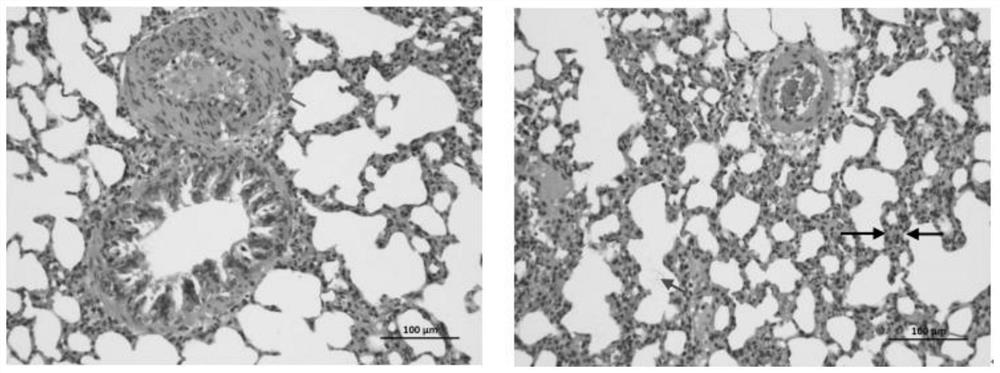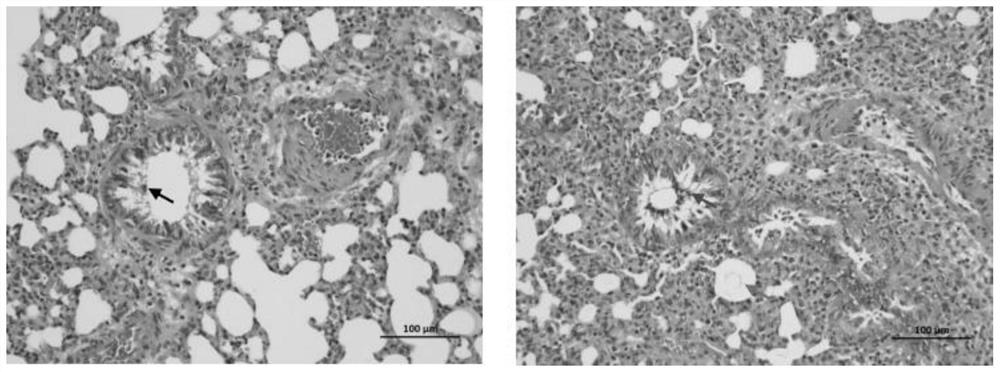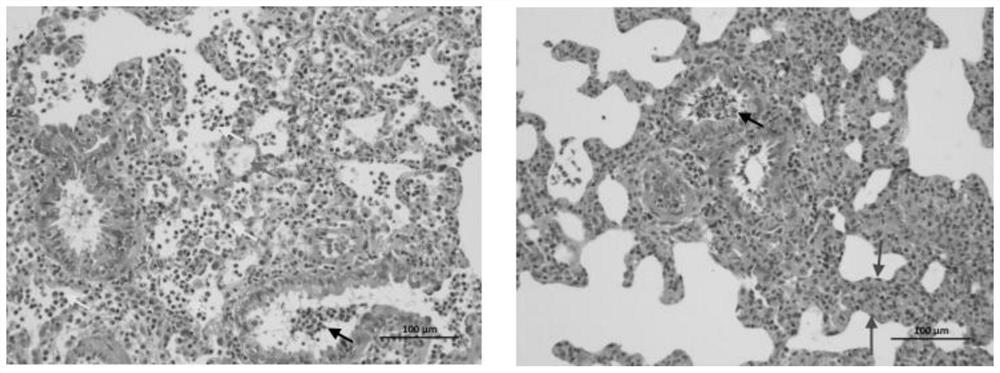Application of ITPP in preparing medicines for preventing and/or treating ischemia-hypoxic injury and lung injury
A technology for hypoxic injury and lung injury, applied in the field of biomedicine, can solve problems such as undiscovered
- Summary
- Abstract
- Description
- Claims
- Application Information
AI Technical Summary
Problems solved by technology
Method used
Image
Examples
preparation example Construction
[0025] The present invention provides a medicine for preventing and / or treating ischemia-hypoxic injury or lung injury. The medicine includes ITPP and excipients. In the present invention, the type and amount of the auxiliary materials are not particularly limited, and they can be added according to the requirements of different dosage forms. In the present invention, the dosage form of the drug includes a drug for injection or a drug for oral administration, more preferably a drug for oral administration, and more preferably an oral aqueous solution. In the present invention, the ITPP is preferably synthesized with reference to the synthesis method described in the document "LFJOHNSON, METATE, CANADIAN JOURNAL OF CHEMISTRY. VOL. 47, 1969", and the raw materials required for the synthesis preferably include: anhydrous chlorination Calcium (AR), w≥96%, Xilong Science Co., Ltd.; Pyridine (AR), w≥99.5%, Guangzhou Chemical Reagent Factory; Sodium Phytate (AR), w≥98%, Shanghai Yuany...
Embodiment 1
[0030] (1) Experimental animals and breeding conditions
[0031] ①Experimental animals
[0032] Grade and strain: SPF grade KM mice;
[0033] Animal management: Animals are kept and managed by personnel who have obtained the qualification of laboratory animal management;
[0034] Age, number and sex at the time of purchase: SPF grade KM mice, 18-22g, 18 males;
[0035] Breeding unit: Guangdong Medical Laboratory Animal Center;
[0036] The laboratory animal certificate number is: 44007200073676;
[0037] Quarantine process: Animal quarantine observation, observing the animal's physical signs, behavior, fecal traits, weight, diet and other indicators;
[0038] Animal identification method: Marker on the tail;
[0039] In the cage marking method, the completed label card (indicating the experiment name, the person in charge of the topic, the animal species, gender, number, group, feeding start date, etc.) is hung on the front of the squirrel cage.
[0040] ② Feeding conditions
[0041] Feeding ...
Embodiment 2
[0100] (1) Experimental animals and breeding conditions
[0101] ①Experimental animals
[0102] Basic information: SPF grade SD rats, 220~250g, 50 males;
[0103] Breeding unit: Experimental Animal Center, School of Pharmacy, Sun Yat-sen University;
[0104] The laboratory animal certificate number is: 44007200074723;
[0105] ② Feeding conditions
[0106] Feeding room: SPF-level barrier environment animal room of the Experimental Animal Center of Sun Yat-sen University;
[0107] Laboratory animal use license number: SYXK (Guangdong) 2010-0102;
[0108] Temperature: 20~25℃;
[0109] Humidity: 50%~70%;
[0110] Ventilation times: more than 10 times / hour;
[0111] Stocking density: 5 animals / cage / group;
[0112] Lighting time: 12 hours (lights on at 7:00 am to lights off at 7:00 pm).
[0113] (2) Main instruments and reagents
[0114] ①Main instrument
[0115] EMKA-WBP-4A small animal lung function testing system: German EMKA company;
[0116] Animal pulse oximeter: Shanghai Yuyan Scientific Instrum...
PUM
 Login to View More
Login to View More Abstract
Description
Claims
Application Information
 Login to View More
Login to View More - Generate Ideas
- Intellectual Property
- Life Sciences
- Materials
- Tech Scout
- Unparalleled Data Quality
- Higher Quality Content
- 60% Fewer Hallucinations
Browse by: Latest US Patents, China's latest patents, Technical Efficacy Thesaurus, Application Domain, Technology Topic, Popular Technical Reports.
© 2025 PatSnap. All rights reserved.Legal|Privacy policy|Modern Slavery Act Transparency Statement|Sitemap|About US| Contact US: help@patsnap.com



